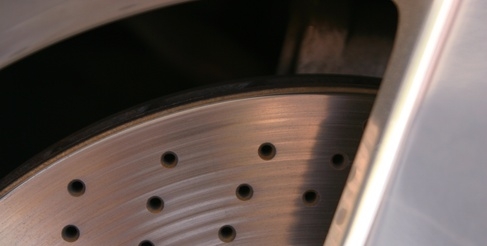
Brake lines are the tubes that carry brake fluid from the master cylinder to the brake caliper. When you push the brake pedal in your vehicle, brake fluid is forced through the brake lines to your brakes, which causes them to squeeze the rotor and stop your vehicle. If the brake lines fail, fluid will leak out and you will lose braking power. It is important to replace your brake lines immediately when failure occurs so that you will be able to stop the vehicle properly.
Jack up the wheel, using a floor jack, which you are changing the brake line for. Place a jack stand underneath the wheel and lower it until the weight of the vehicle is supported by the jack stand. Remove the wheel from the vehicle and set it aside.
Clean the joint, which the brake line is screwed into at the brake assembly, of any debris that may be near the joint. This prevents any debris from getting into the brake system and causing malfunction.
Place one wrench on the joint and one wrench on the fitting on the brake line. Turn the wrench on the fitting while holding the joint in place with the other wrench. Use a drain pan to catch any fluid that may leak out of the brake line.
Remove the other end of the break line at the master cylinder by using a wrench to loosen the fittings. Move down the whole length of the brake line and undo any clips that are holding it in place. Remove the brake line from the vehicle and discard it.
Screw the new brake line into the joint at the brake assembly replacing any washers, or gaskets, that were found on the old line. Use two wrenches, one to turn the fitting and the other to hold the joint in place.
Attach the other end of the brake line to the master cylinder by screwing the fitting into the master cylinder. Move along the brake line and attach the line to any clips that hold it onto the vehicle. Make sure that the brake line is protected from rubbing against any moving parts on the vehicle and is not bent or kinked in any way.
Fill the vehicle with brake fluid and bleed the system to make sure there are no air bubbles present. After the brakes are properly bled, put the wheel back on the vehicle and use the floor jack to life the vehicle off of the jack stands and back onto the ground to complete the installation.